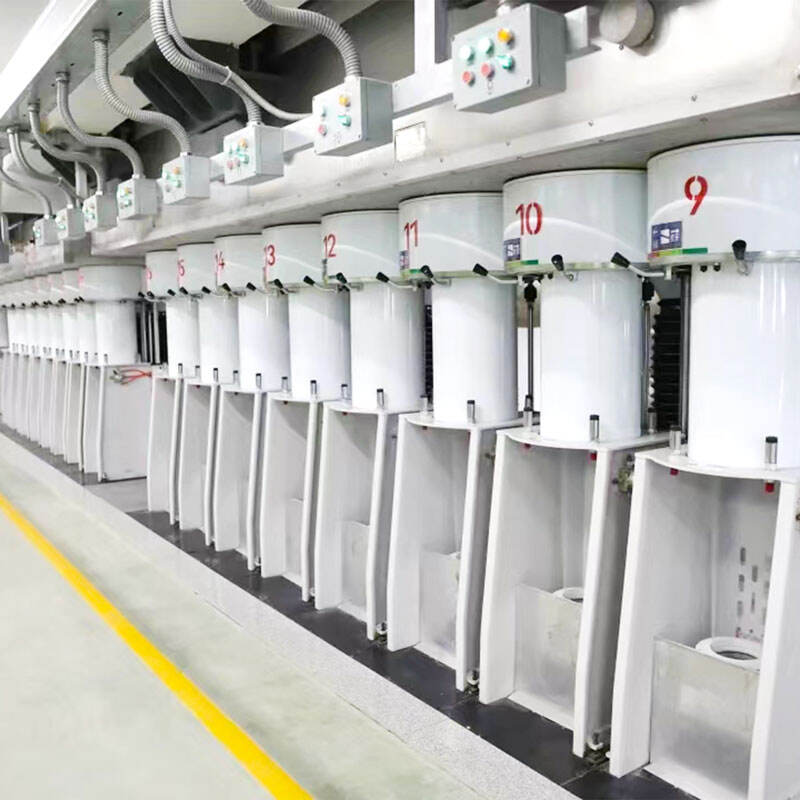Exploring the types of staple fibers, particularly hollow and solid fibers, unveils their versatility and application across various industries such as textiles and composites. Hollow fibers are prized for their insulation properties, making them ideal for the textile industry, particularly in cold-weather clothing, whereas solid fibers are valued for their strength and durability, often utilized in the production of composites and industrial textiles. According to industry studies, the unique physical properties of these fibers enhance their application range, contributing significantly to the development and functionality of end products.
A crucial element in the production of flexible staple fibers is the use of advanced machine production lines. These lines streamline the entire manufacturing process, from raw material handling to the final product, significantly enhancing productivity and efficiency. For example, the implementation of flexible staple fiber making machine production lines often showcases measurable improvements in production capacities, with some setups facilitating output increases of up to 30%. This underscores the importance of integrating modern machinery to optimize and rationalize fiber production, thereby meeting growing industrial demands for high-capacity output efficiently and sustainably.
The spinning line is a crucial component in the flexible staple fiber making machine production line, with its design and operation playing integral roles in the quality of staple fiber produced. The design is often characterized by precision engineering that allows for the consistent spinning of fibers, ensuring uniformity and finesse. According to industry standards, a well-designed spinning line can maintain operating speeds that maximize output while preserving fiber integrity. This quality assurance is vital in maintaining the competitive edge of manufacturers in industries that rely on high-quality staple fibers.
Furthermore, the drawing line serves as another essential feature of the production setup. This component functions by elongating the fibers, enhancing their strength and quality. By stretching the fibers, the drawing line contributes to creating a product with the desired mechanical properties such as tensile strength, which is critical for their application in various end-use markets. Real-world production setups have demonstrated the effectiveness of efficient drawing lines, where fiber elongation processes are streamlined to maintain high throughput while minimizing waste, contributing to improved production efficiency.
Transitioning between hollow and solid fibers has become more efficient with cutting-edge spinning techniques. These methods allow producers to seamlessly switch production while maintaining high fiber quality. Technologies such as bicomponent spinning enable manufacturers to produce both fiber types using the same machinery, offering flexibility in operations. As noted by industry experts, the trend is towards integrating smarter, more adaptable spinning technology that minimizes downtime and improves material efficiency.
Control mechanisms play a crucial role in ensuring consistency during transitions between fiber types. Advanced production lines are equipped with sophisticated monitoring systems, allowing for precise control over the spinning process. These systems ensure that the transition between hollow and solid fibers is smooth, reducing the risk of defects and enhancing production efficiency. Technological advancements in these areas have significantly impacted the adaptability of fiber manufacturing, enabling companies to meet diverse market demands more effectively.
Efficiency in fiber production lines hinges on strategic optimizations that can enhance workflow and update machinery. This often involves adopting technologies that streamline processes, such as automated systems for packaging and material handling, as demonstrated by companies like A.Celli Nonwovens. Their modular, high-performance packaging lines have been shown to increase productivity while maintaining flexibility, serving as a case study in successful implementation. Additionally, embracing Industry 4.0 applications, which provide real-time data monitoring to optimize production and detect anomalies, can significantly enhance efficiency.
Maintaining robust quality control across production lines is crucial for ensuring the efficacy of fiber products. Implementing industry benchmarks like those offered by high-precision machineries from companies such as Kansan, which boasts integrated production lines capable of producing high-quality wet-wipes, can support this process. Quality control not only prevents faults but also enhances the reliability and performance of products, ensuring they meet the exacting standards required in the industry. By focusing on both efficiency and quality, fiber production lines can achieve optimum operational performance, resulting in superior products.
The Flexible Staple Fiber Making Machine Production Line is a highly adaptable and robust solution for manufacturing both hollow and solid fibers. Key specifications of this machine include a comprehensive operational process that spans from raw material conveying through to the baling press. Essential operations such as PET material drying, spinning, tow quenching, and cutting are seamlessly integrated, ensuring streamlined production from start to finish. The machinery’s automation features and process precision are designed to offer exceptional performance in the competitive manufacturing landscape.
This production line is specifically engineered with modern features that enhance energy efficiency and minimize waste. For instance, its automation versatility allows for a significant reduction in manual labor, translating to cost savings and improved resource utilization. The design emphasises reduced energy consumption, ensuring that manufacturers can lower operational costs while maintaining high production standards. Moreover, the automation process has been shown to cut down waste by up to 20%, reinforcing its role in sustainable manufacturing practices.

 Hot News
Hot News2024-07-25
2024-07-25
2024-07-25